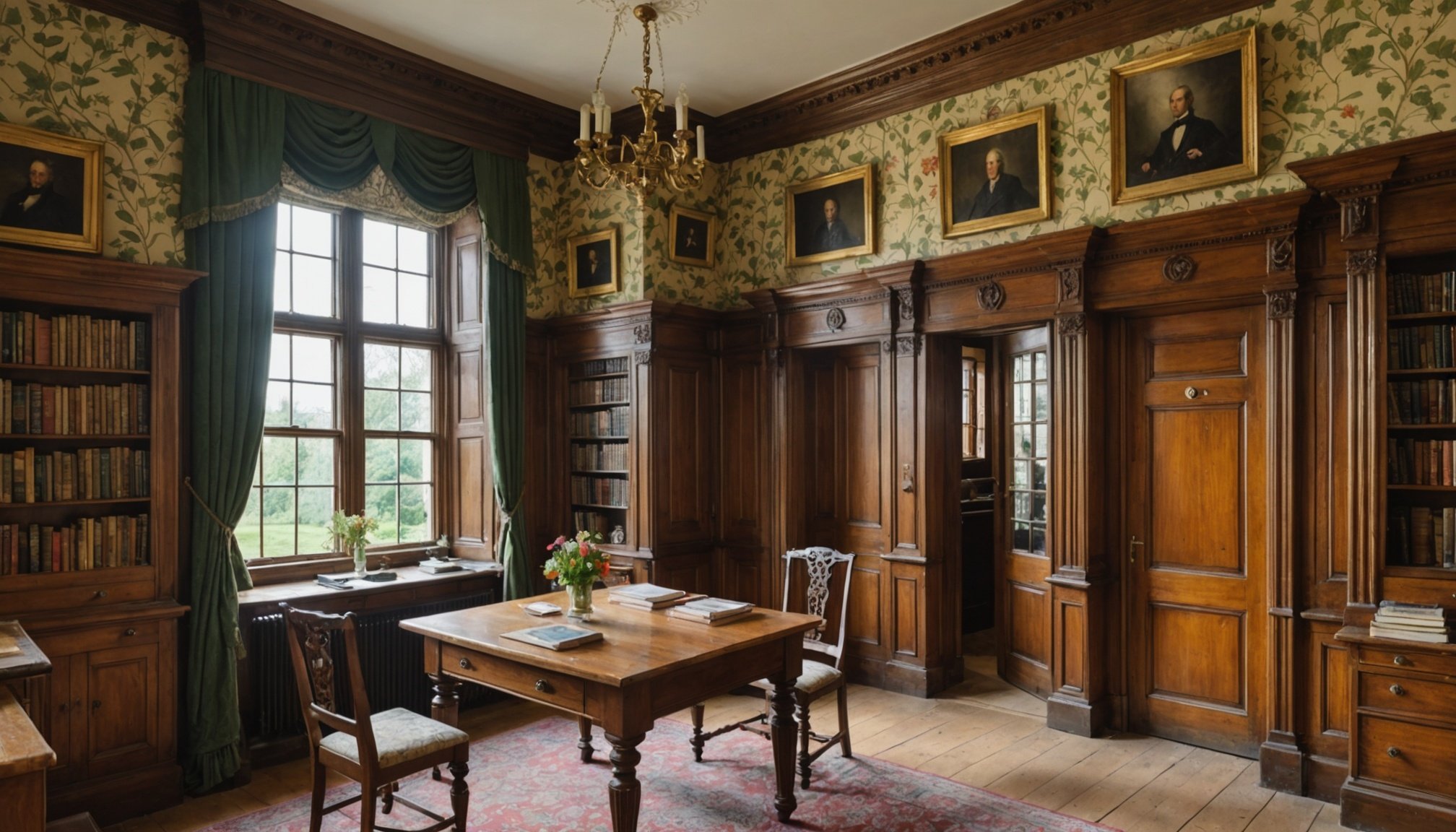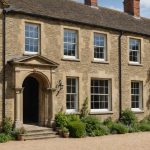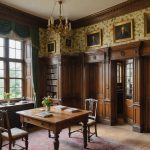Understanding Historic Woodwork Care
Preserving historic woodwork is crucial not only for maintaining the aesthetic beauty of heritage homes but also for safeguarding the historical significance embedded within these structures. Often, these homes feature wood materials that have been integral to construction practices throughout history, making them essential assets in the realm of heritage home maintenance.
One can face several challenges in preserving historic woodwork, primarily due to the natural vulnerabilities of wood over time. Common issues such as rot, warping, and insect infestation necessitate immediate attention to prevent further deterioration.
In parallel : Essential strategies to cut energy consumption in your uk home this winter
Historically, wood has been a predominant material in heritage homes, not merely for its functional benefits but also due to its cultural and architectural value. Techniques and choices in wood usage often reflect the timeframe of construction, offering insights into past societies and their connections to available resources.
Understanding these aspects is key to effective preservation. Regular maintenance, employing appropriate cleaning and conservation methods, ensures that historic woodwork continues to withstand the test of time. By adopting these strategies, homeowners not only protect their investments but also contribute to the preservation of cultural history, ensuring that future generations can appreciate the craftsmanship and legacy of historic woodwork.
Essential Care Strategies for Historic Woodwork
Woodwork maintenance techniques and conservation methods play pivotal roles in preserving historic woodwork. Employing these techniques is essential to keep these storied structures intact for future generations.
Regular Cleaning Practices
Cleanliness is a cornerstone of preserving historic woodwork. Use soft, non-abrasive cloths and pH-neutral cleaners to protect wood surfaces. It is recommended to clean woodwork monthly to deter dirt build-up. Always test cleaning products on inconspicuous areas first to avoid damage.
Techniques like gentle buffing can enhance the wood’s natural luster without causing harm. Avoid using water-based cleaners, as they can seep into and warp the wood over time.
Moisture Control and Management
Maintaining optimal humidity levels is crucial for wood preservation. Indoor humidity should remain between 40-60%. Employ hygrometers to monitor these levels closely. Consider using dehumidifiers in damper environments to prevent swelling or shrinking of wood components.
Simple measures like fixing leaks promptly and maintaining ventilation play a role in guarding against water damage.
Inspection and Early Detection
Regular inspections allow for the early detection of wear and damage. Look for signs of cracks, rot, or insect activity. Seasonal inspections help identify issues related to temperature and humidity changes. Keep a checklist to systematically evaluate the woodwork’s condition, allowing for timely interventions and maintaining the wood’s longevity.
Recommended Products for Preservation and Maintenance
Caring for historic woodwork involves using the right wood care products and preservation solutions.
Finish and Sealants
Selecting the best finishes for historic woodwork is crucial to ensure its longevity. Finishes such as natural oils, varnishes, and paints offer varying levels of protection. Oils penetrate the wood, enhancing its natural grains and preserving flexibility. Varnishes provide a hard, glossy layer that shields against humidity. Paints offer comprehensive coverage, ideal for protecting against harsh weather conditions. Choosing the right finish for your home depends on your desired aesthetic and the level of protection needed.
Insect and Pest Control Solutions
Eco-friendly pest control options are pivotal in treating wood affected by insects. Pests, such as termites and woodworms, can cause significant damage if untreated. Regular routine checks for insect damage are essential to maintain wood integrity. Eco-friendly solutions, such as borate-based treatments, are effective in deterring pests while being gentle on the environment.
Repair and Restoration Materials
When it comes to wood restoration, the choice of fillers and adhesives is paramount. Specialised fillers can seamlessly repair cracks or holes, while high-quality adhesives ensure the longevity of these repairs. Sourcing historical materials can be challenging; thus, it is wise to seek professional guidance for restoration services.
Preventive Measures for Common Issues
Preserving historic woodwork requires diligent preventive maintenance to address potential threats. Awareness of and action against these threats can ensure the long-term stability of heritage wood protection.
Addressing Rot and Decay
Rot is a significant issue for woodwork preservation. Early signs include discolouration and a musty smell. To treat rot, it’s best to remove decayed areas and apply preservative treatments. Use wood hardeners and epoxy products for effective restoration. Prevent future decay by maintaining proper ventilation and drainage around the woodwork.
Protecting Against Insects
Common wood-boring insects, like beetles and termites, are a prevalent threat in the UK. Prevention starts with regularly inspecting woodwork for signs of infestation, such as small holes or sawdust piles. Incorporate best practices like sealing cracks and using insecticides sparingly. Long-term protection can be achieved by implementing physical barriers and ensuring proper wood storage conditions.
Weatherproofing Techniques
Weatherproofing is essential for exterior woodwork. Products like sealants and weather-resistant paints can shield wood from harsh environmental conditions. Applying these products before wet seasons protects against moisture ingress. Different climates require tailored approaches, so consider regional factors when selecting weatherproofing solutions. Effective weatherproofing prolongs the life of historic woodwork by minimising exposure to the elements.
Regulatory Considerations for Heritage Homes
Maintaining historic woodwork requires adherence to heritage home regulations. Understanding these rules ensures that restoration efforts align with preservation standards.
Local regulations govern changes to heritage properties, safeguarding their historical integrity. Before embarking on modifications, homeowners must seek the appropriate permits to ensure compliance. This not only protects the structure’s value but also respects its cultural significance.
Homeowners should be aware of preservation standards that define acceptable modifications and practices. These standards guide the maintenance of original materials and architectural features, ensuring that updates do not compromise historical authenticity. Engaging with conservation officers or experts can provide invaluable insight into these requirements.
For those unfamiliar with regulatory processes, numerous resources offer guidance. Local heritage agencies provide information on compliance, helping homeowners navigate the complexities of heritage home preservation. Many also offer workshops or consultations for a more hands-on understanding.
Securing necessary permissions before starting projects is crucial. Unauthorized alterations might lead to penalties or degradation of the property’s historical value. By adhering to heritage home regulations, homeowners play a vital role in the ongoing preservation of our cultural heritage, ensuring that historic woodwork remains a testament to the past.











